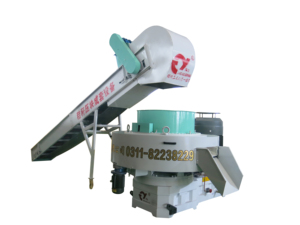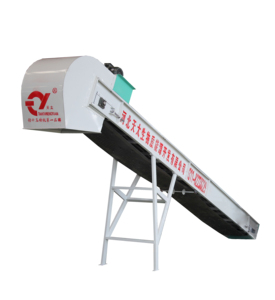
All categories
Featured selections
Trade Assurance
Buyer Central
Help Center
Get the app
Become a supplier

(1966 products available)













































A manual brick making machine in Papua New Guinea is a machine that makes bricks and paving stones without the use of electricity. There are different types of machines and they all use different methods to produce bricks and blocks of different shapes. The simplest form of a machine is one that uses the hands or lever power to make bricks. This may come as a frame in which prepared material is manually forced into to create a shaped unit for curing and use. More complex manual machines include ones that require the lower power input through foot pedals for greater mechanization like foot-operated machines that use pedal power to hydraulically push out the formed material of pushed clay. Finally, fully manual machines with large output capacities use manual cranks to fully operate the machine and produce anything between 800-1200 bricks a day depending on the size and capacities of the machines.
Another way to understand the differences in manual brick machines available in Papua New Guinea is by understanding the kind of bricks and materials each machine produces. Some machines are specifically geared towards producing fly ash bricks which are made from fly ash, lime, gypsum, and water, whereas other machines are made to produce concrete blocks, which are made from cement, sand, gravel, and water. Finally, clay brick manual machines are also available.
Besides these differences, the primary way of differentiating between brick-making machines is the method of molding the bricks. Some machines are specific set on producing bricks by vibration and are termed as vibratory brick-making machines. Other machines are organized for pressure brick-making and are pressure brick-making machines. Another distinction in machines is if they are fully automatic, semi-automatic and fully manual. Those machines that require manual feeding and extraction of bricks are termed semi-automatic, whereas fully automatic machines are termed automatic when the process is fully mechanized and runs on electricity.
Finally, principal differences in the brick-making machines are those machines that produce mainly solid blocks and are solid block making machines, and those machines that are set up to produce hollow blocks and are organized as hollow block-making machines. The latter kind of machines also come with the option of reducing the weight of construction material and increasing the carrying capacity to be more environmentally friendly with cellular blocks.
The specification varies according to the type and model.
Maintenance
To increase the lifespan of the manual block making machines, operators should carefully follow the maintenance manual. Regular cleaning is essential because removing debris and dried concrete will stop build-up and corrosion of important parts. Lubricate the machine components at regular intervals to reduce wear and tear and friction and improve energy consumption.
Always check spare parts like belts, pumps, valves, and filters to ensure they work efficiently. In case of damage, replace them right away to avoid any delays in brick production. Take the machine manual to a qualified technician for periodic inspections or servicing. This will identify any potential issues early enough to avoid any costly repairs. Implement training sessions to ensure all operators understand the safety measures and proper maintenance requirements.
The manual brick press machine can be utilized in different scenarios to produce high-quality bricks efficiently. The following are some of the usage scenarios for manual brick-making machines.
Determine Investment Amount:
Determine the amount of money business owners or buyers are willing to spend on the manual brick machine. This will help to decide whether to go for large, mid-sized, or small machines. It is also essential to consider additional costs like transport, installation, and staff training.
Know Desired Machine Capacity:
Manual machines tend to make fewer bricks per day than automatic machines. If looking for a machine that the business can easily afford, an easily operated manual machine is preferable. Larger businesses with more significant demands should consider machines with larger production capacities and more advanced technology. For example, a daily output of 5,000 to 8,000 bricks is possible with fully automated machines, while semi-automatic and manual machines offer 2,000 to 5,000 bricks per day.
Consider Raw Materials:
Consider the type of raw material owners of brick-making companies want to use to create the bricks. Certain manual brick-making machines work best with particular raw materials. For instance, a machine built to manufacture clay bricks may not operate effectively with fly ash as a primary material. Additionally, several manual machines have particular modifications to facilitate the processing of distinct raw materials. For example, some machines may have additional mixing units or feeders to handle specific types of sand or aggregates.
Check if the Machine is Eco Friendly:
More manual brick-making machines are becoming eco-friendly by using waste materials to cut down environmental impact. Consider models like the interlocking brick machine, which reduces cement usage and enhances durability or those that utilize pervious materials for improved waste management.
Check for Energy Requirements:
It's important to know the electric supply in the overall brick-making location and what energy sources the machine uses. Consider whether to use diesel or generator energy. It will help to research fuel suppliers and determine whether they'll be easily accessible.
Opt for User-Friendliness:
Choosing a simple-to-operate machine will cut down on training and maintenance costs. For remote areas, it's a great idea to go for machines that don't require a lot of automated parts to reduce downtime.
Q1: What kind of bricks can a manual brick maker create?
A1: Manual brick makers can produce a wide variety of bricks depending on design and function. Common types include concrete bricks, clay bricks, interlocking bricks, fly ash bricks, etc.
Q2: Can a manual brick-making machine be used in small-scale production?
A2: Yes, one of the greatest benefits of a manual brick-making machine is the ability to suit small-scale production.
Q3: Is it possible to automate a manual brick-making machine?
A3: Depending on the design and setup of the brick-making machine, it may be possible to automate some processes.